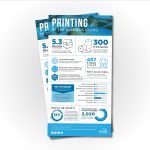Print + Paper in Education
New educational methods and tools are quickly being adopted world wide, including using digital technology as a primary learning tool. How will these new learning methods effect students? Current research reveals that there are learning and retention limitations to engaging digital technology in the classroom and as a studying tool when compared to pencil and paper.
- Parents and toddlers who read paper books together speak and interact more when compared with those who read eBooks. (Munzer, et al, 2019)
- A meta-study of 54 studies with more than 170,000 participants reveals that readers’ comprehension is better when reading from paper vs. screens. The study also found that readers are more likely to be overconfident about their comprehension abilities when reading digitally than when reading in print, in particular under time pressure, leading to more skimming and less concentration on reading matter. (Intergraf, 2019)
- Fine motor writing skills in preschool were consistently stronger predictors of reading and math achievement than fine motor manipulation tasks. (Dinehard and Manfra. 2013. Early Education and Devel.)
- Elementary students who write by hand are found to write more quickly, produced longer pieces, and wrote more complete sentences than those who do not, and handwriting strengthens fine motor skills in young students. (Zubrzycki, 2012)
- Children remembered more details from stories they read on paper than ones they read in eBooks enhanced with interactive animations, videos and games. (Jabr, 2013)
- Three studies that compared print and digital comprehension among college students reading newspaper articles and fiction excerpts found that students read digital formats faster – at a cost. Students gleaned the main idea from digital texts as well as they did from print. But they absorbed fewer details, which suggests students are much better off reading print for in-depth, university-level study. (Singer, Alexander, 2016)
- Studies that compare the efficiency and effectiveness of print vs. paperless reading typically agree that print has key advantages.
Print Readers:- Read more quickly (Nielsen, 2010)
- Experience less mental fatigue. (Wastlund et al, 2005)
- Report significantly lower levels of eye fatigue following reading. (Jeong, 2012)
- Find it easier to concentrate. (Jabr, 2013)
- Retain more of what they read. (Christensen, 2013)
- Score better on reading comprehension tests. (Jeong, 2012)
- The tangibility of traditional print also provides a a stronger emotional impact, allowing readers to interpret and internalize text through their own experiences and beliefs. (Millward Brown, 2013)
- Print text allows readers to mentally map information they read in relation to other information or ‘landmarks’ (e.g., a chapter, the left or right page, near the top or bottom on the page). Spatial maps have been shown to improve learning, retention and comprehension overall. (Barr, Kamil, et al, Handbook of Reading Research, Vol. 2015)
- When it comes to reading books, magazines and newspapers, print is preferred over digital.
- 68% of Americans and Canadians believe print is the most enjoyable way to read books.
- 65% of Americans and 59% of Canadians prefer to read magazines in print.
- 53% of Americans and 49% of Canadians prefer to read newspapers in print. (Two Sides and Toluna, 2019)
The information in this article is from Two Sides North America, 2020. Two Sides North America is an independent, non-profit organization, and is part of the Two Sides global network with includes from than 600 member companies across North America, South America, Europe, Australia, and South Africa. Two Sides mission is to tell the sustainability story of print, paper and paper-based packaging.






